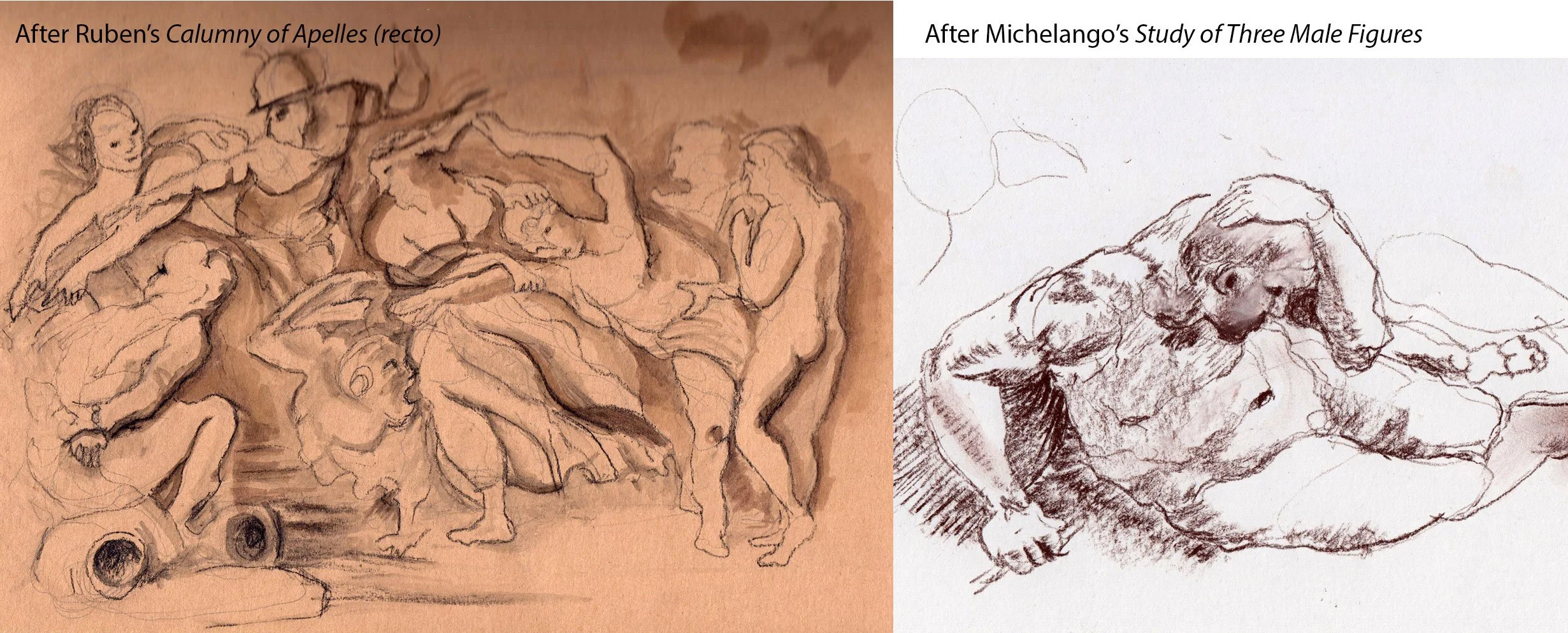Week 2 Reflections: Encountering the Figure - Rubens
Having read the introduction to the Lines of Thought Exhibition Catalog (I was lucky to see it a few years back), I was intrigued by Rueben's stance on drawing from drawings, that he would not take true copies and make his versions better than the originals. When you consider making copies in the past was a form of training actively employed by the then Academy, it's a trait that is still in use today, where artists hire studio assistants to mimic their style on a large scale. Even in art school myself, we were tasked with copying an artist and then, crucially, generating artwork in that style. The last bit is essential here, impersonating as a mechanism to develop your ideas. I went to the British Museum, and the perspective I gained from drawing from Reuben's work was inspirational. You can see the work's scale and tend to look more closely at them as you wrap your head around how old the drawings are. Rubén’s drawings are an excellent example of what Friedlander describes as ‘thinking aloud’ (p12, Lines of Thought Exhibition Catalog ) where you can see the artist's stream of consciousness in working out poses and compositions. These drawings can be seen as observational or conceptual studies, as some may lead to further works of art, others as sketchbook studies etc.Ruebens multiple studies that I copied could also be perceived as a brainstorming session where the artist is simply expressing and testing their ideas on paper, which you would associate with sketchbook work. Kept for the artist’s enjoyment and a record of ideas for future brainstorming, not for the public to see and stored away. Or it is seen as a preparatory drawing where the art historian has identified these images in Rueben's finished artworks, making them more valuable. Many initial sketches did not survive; they either became occluded behind final paintings or destroyed over time as they were not deemed valuable by the artist. 
